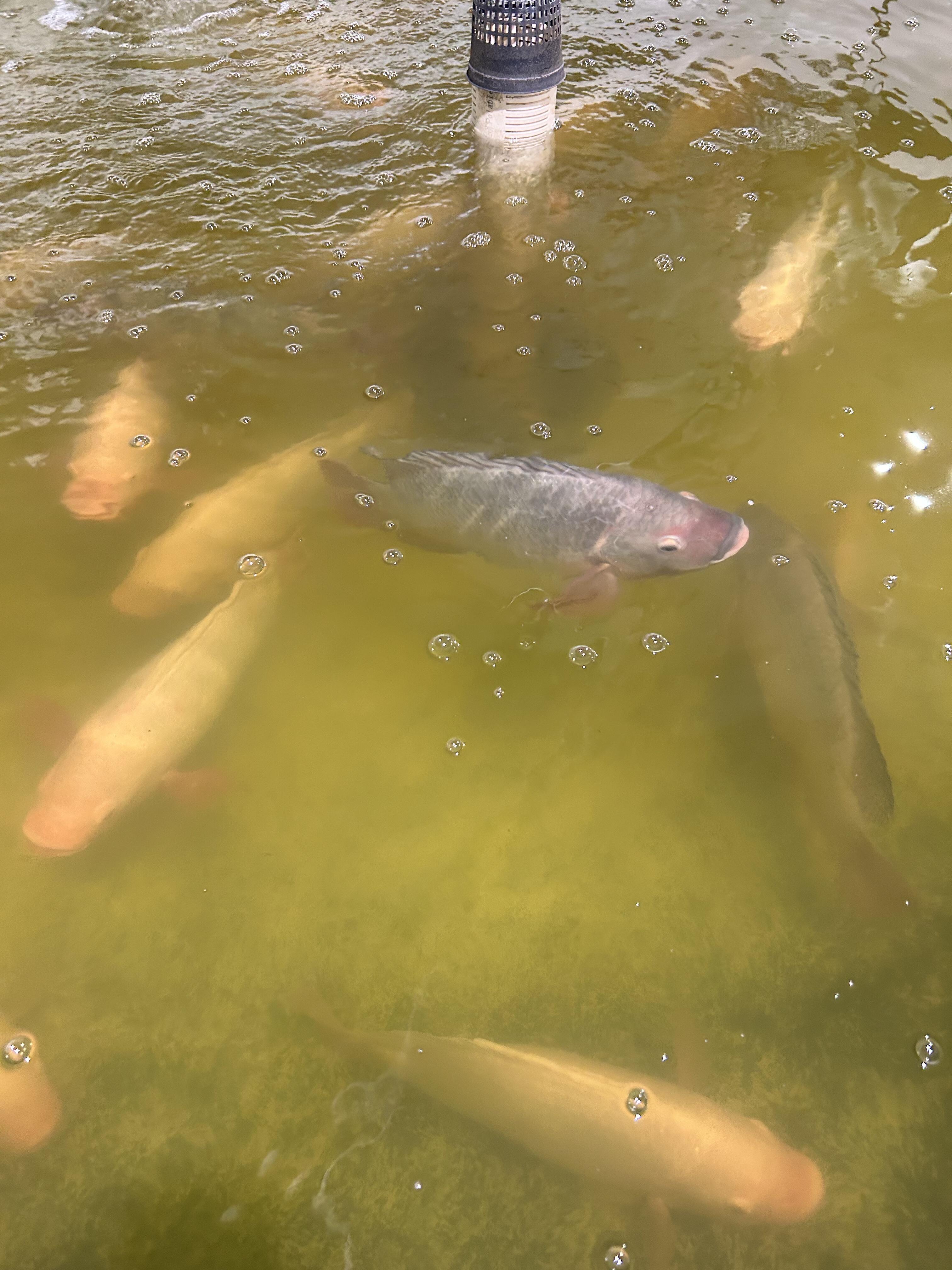
Episodes

Tuesday Apr 16, 2024
Tuesday Apr 16, 2024
“How can we produce food... and reduce our footprint?” – John Derksen, Chair of the Aquaculture Centre of Excellence
John Derksen, Chair of the Aquaculture Centre of Excellence, and Dr. Nick Savidov, Senior Research Scientist at the Aquaculture Centre of Excellence take us on a deep dive into aquaponics!
They explain how their aquaponics facility works, including their state-of-the-art biofiltration technology that’s taking reduce, reuse, recycle to a whole new level. With a proper set up, aquaponics creates a synergistic ecosystem where fish, plants, and microorganisms can thrive indefinitely.
John and Nick also share about upcoming applied research projects, and about their microcredential series which have garnered the interest of – and collaboration with – the largest aquaponics association in the world.
References:
- Peruse Aquaponics Microcredentials here!
- Aquaculture Centre of Excellence
- Difference between aquaculture, hydroponics, and aquaponics:
- Aquaculture is the farming of aquatic organisms like fish, shrimp, or aquatic plants in controlled environments, such as tanks or ponds, for food or commercial purposes.
- Hydroponics is a method of growing plants without soil, where roots are submerged in a nutrient-rich water solution or grow in soilless media using nutrient solutions.
- Aquaponics is a symbiotic ecosystem combining aquaculture (raising fish), hydroponics (growing plants without soil), and microorganisms. Fish waste provides nutrients for plants and microorganisms, and the plants and microorganisms purify the water for the fish.
- VR – Virtual reality
- RAS – Recirculating aquaculture system
- A drum filter in aquaponics is a mechanical filtration system that uses a rotating drum to separate solid waste from liquid waste.
- An oxygenator in aquaponics adds oxygen to the water, helping fish breathe and promoting the growth of beneficial bacteria that break down fish waste into nutrients for plants.
- A biofilter in aquaponics harbours bacteria (nitrifiers) that convert toxic ammonia into nitrate through a two-step process.
- A bioreactor in aquaponics is a chamber that utilizes aerobic microorganisms to break down and liquify all solid fish waste that is separated and collected from the system. Aerobic is key, as most bioreactors are anaerobic.
- A trickling (carbon) filter in aquaponics is both a mechanical and self-regenerating biofilter where water trickles over a physical medium (such as charcoal) and slowly drains through. Microorganisms colonize this medium and help to break down harmful (typically liquid) fish waste, such as ammonium, and mineralize finer organic particles as it passes through. Finer solid particles are filtered out in the process, producing crystal-clear water.
- Water polishing in aquaponics is the process of removing any remaining particles or impurities from the water to ensure it's clean and clear for both fish and plants.
- Filter backwashing in aquaponics is the process of reversing the flow of water through a filter to remove accumulated debris and waste. This process isn’t needed in a properly functioning aquaponics system!
- Aerobic – with oxygen
- Anaerobic – without oxygen
- University of Alberta
- Dr. Basil Andrew Keddie
- Examples of other applied research projects at the college:
- Comparing HSP with LED lighting (by Stouch Lighting Staff, LED lighting sellers)
- HPS – high-pressure sodium
- LED – light-emitting diode
- High Bay LED lighting is an energy-efficient fixture design that brightly illuminates large indoor spaces with high ceilings, such as warehouses or factories, using long-lasting LED technology
- Canola Council of Canada
- SOP – standard operating procedure
- E. coli (Wikipedia)
- University of Georgia – Interdisciplinary team for aquaponics
- CTLI – Centre for Teaching, Learning, and Innovation
- The Aquaponics Association
- CARIE – Centre for Applied Research, Innovation, and Entrepreneurship
- Grab a bottle of the Aquaculture Centre’s plant superfood fertilizer from two places:
- Lethbridge College Bookstore
- Google Maps location of Granary Road (just south of Calgary, AB)
- Read more about Lethbridge College’s Aquaponics plant food on this page (scroll to the bottom)
- Check out Aquaponics photos below ⬇️





No comments yet. Be the first to say something!